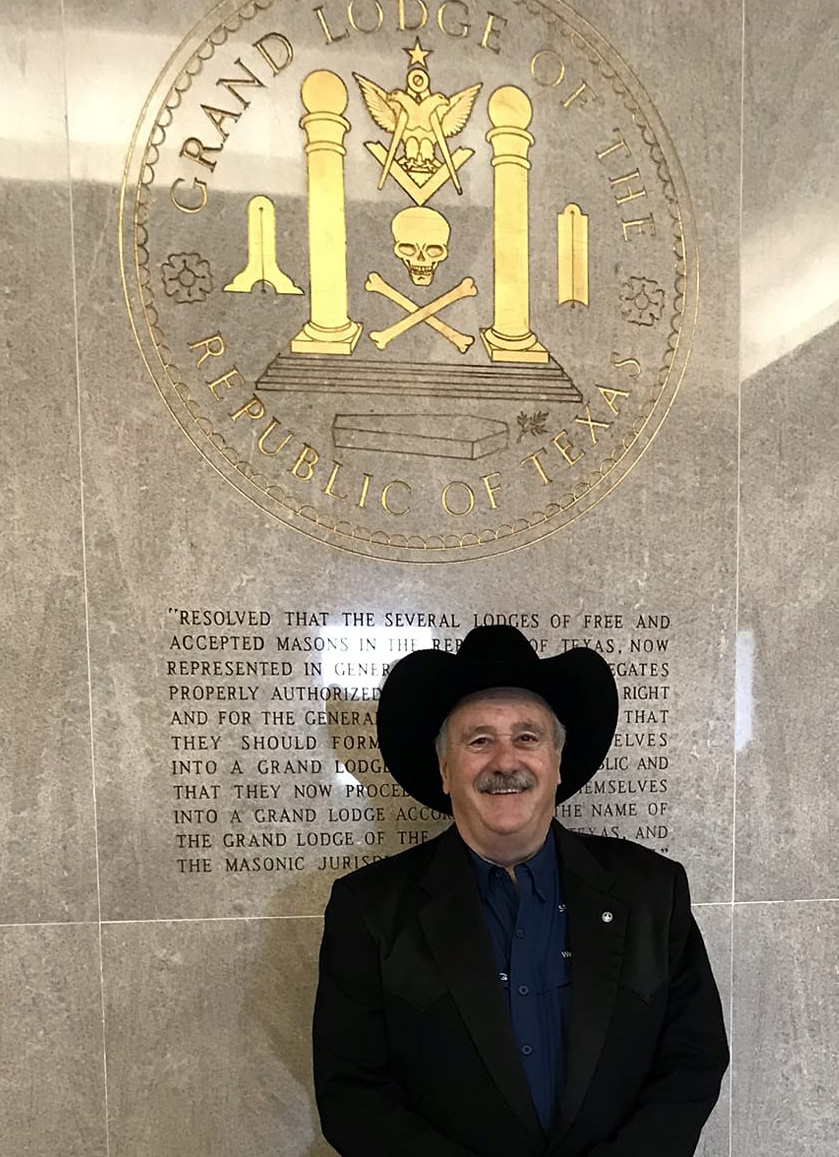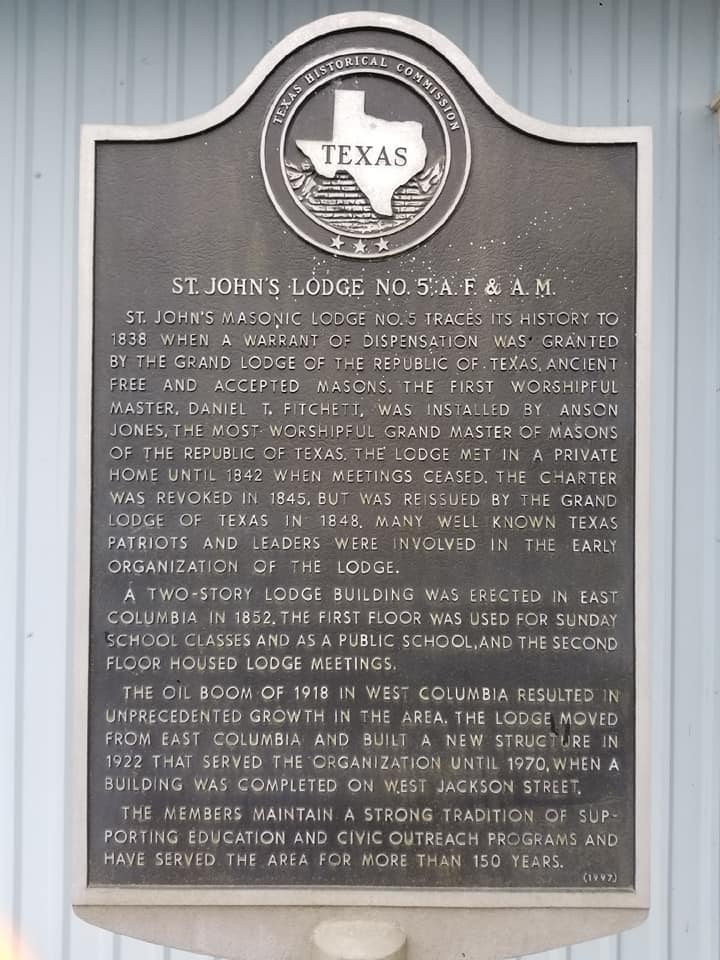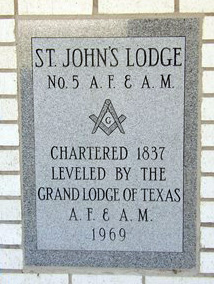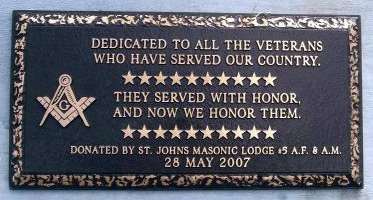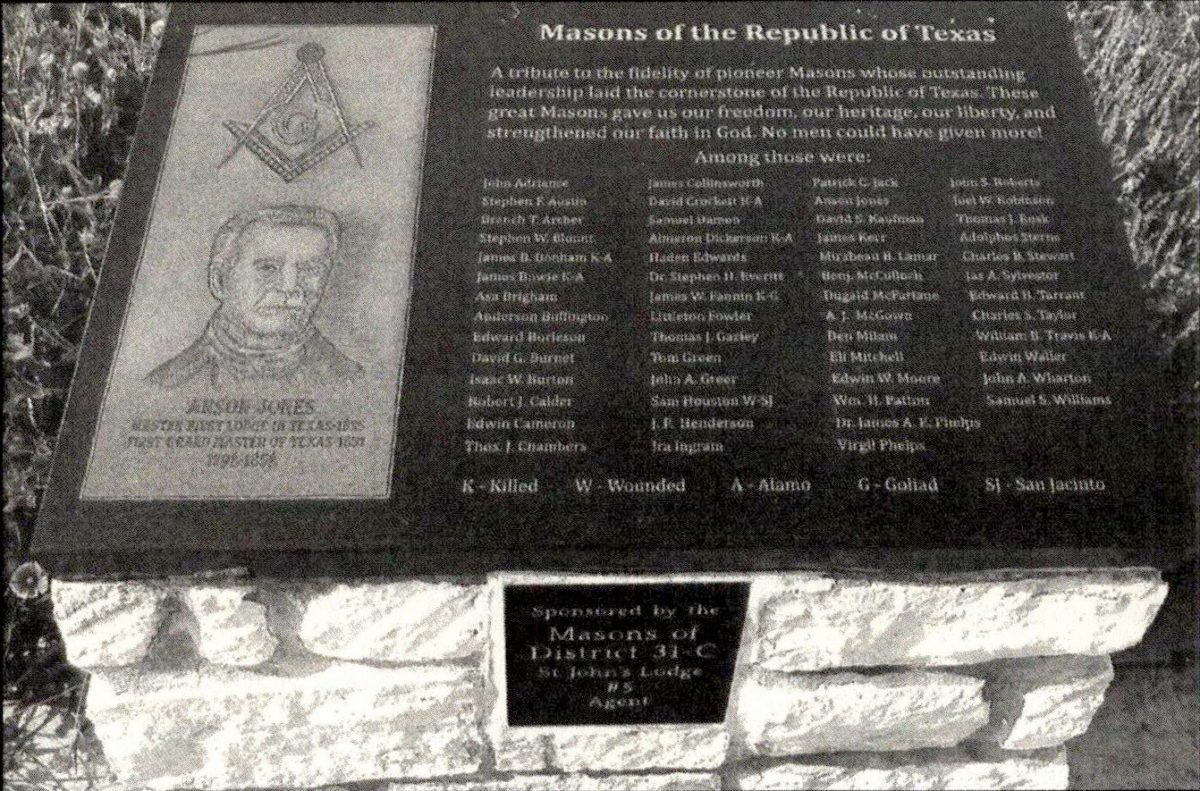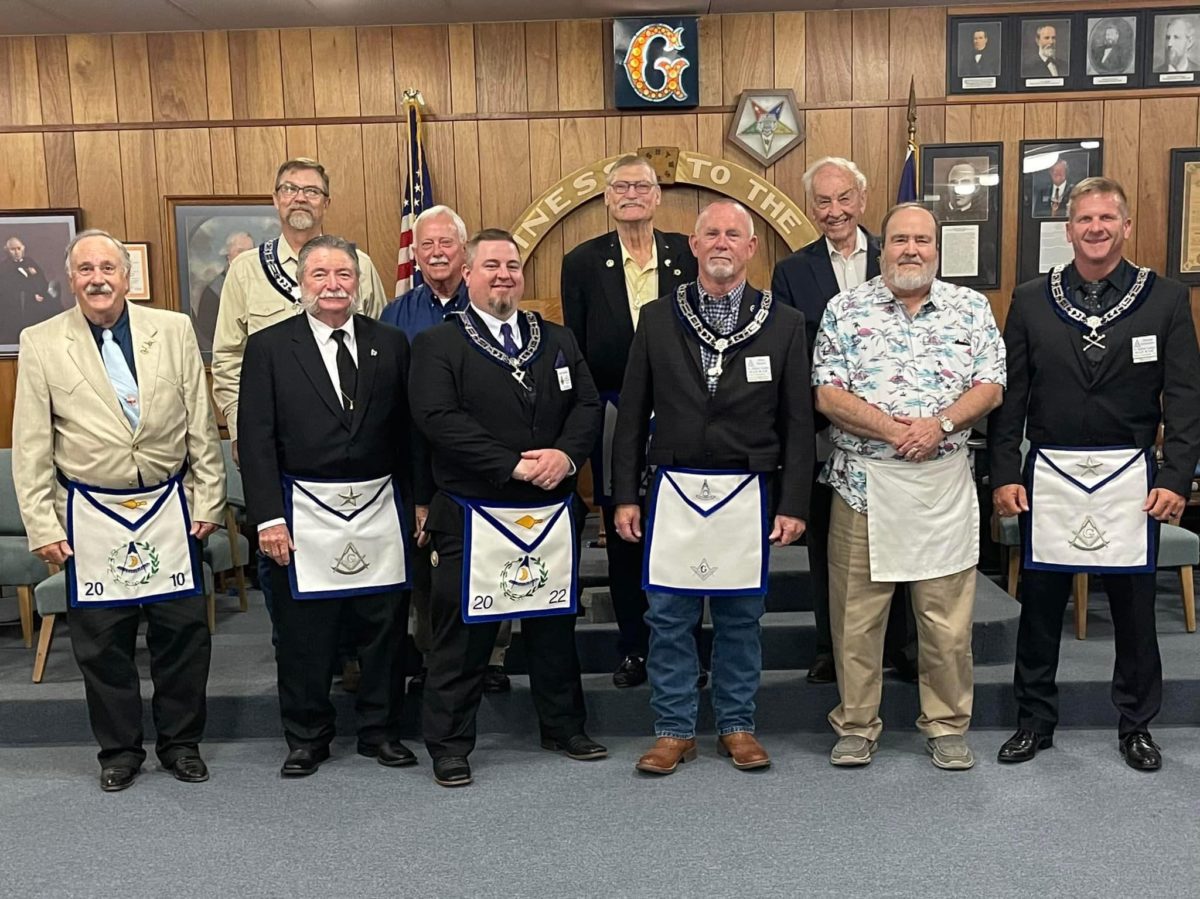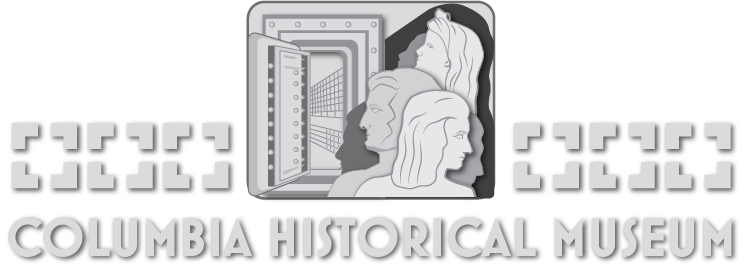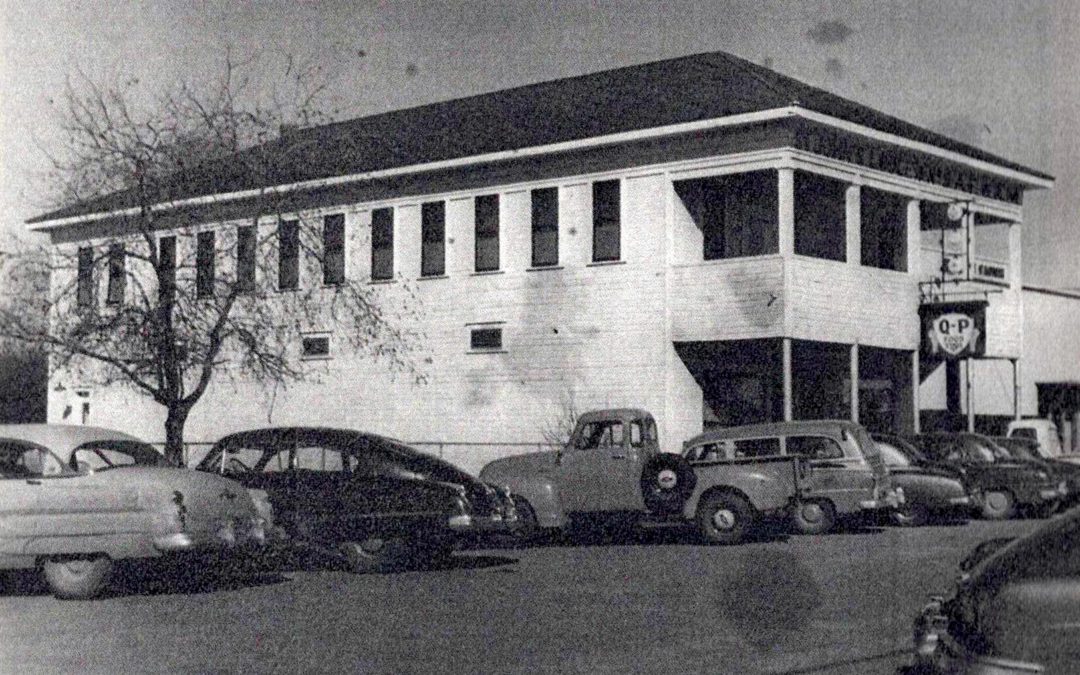![]()
By Tracy Gupton
Columbia Historical Museum Board Member
What do George Washington, Clark Gable, Willie Mays, Benjamin Franklin and John Wayne have in common? In addition to being famous names in American history, the common thread that links them all together is that they were all Freemasons. Many of this nation’s presidents, from Washington and Andrew Jackson to both Teddy and Franklin Roosevelt and Harry Truman, were also Masons.
Not only were many of the founding fathers of our great nation Freemasons but so were most of the early Anglo male settlers who came to Texas in the 1820s with Stephen F. Austin, the “Father of Texas” who died near West Columbia in late December of 1836. Austin himself was a member of Louisiana Lodge No. 111.
Columbia High Graduate Pens Masons Book
Scott Leopold, a present-day member of West Columbia’s St. John’s Lodge No. 5, published a book in 2012 on “Masons in the Early Days of Texas” that takes readers down the path of his lodge’s history and highlights the many Freemasons who played vital roles in laying the foundation for, not only early Texas as a part of Mexico, a free republic and eventually a state, but also in the infancy of establishing the Masons in Texas.
“Brothers of the lodge served their country to the fullest, worked at their craft, fought and even died with some of the most famous people in the state’s history,” Leopold writes in his book. “Times were hard, roads were bad, and rivers had to be crossed. Conducting a lodge meeting, or even discussing the possibility of having one, was no easy task. If the wrong person overheard such a discussion, it could mean imprisonment or even death.”
J.P. Caldwell, who was wounded in the Battle of Velasco, was one of six men who secretly organized the first Masonic Lodge in Texas. At Brazoria, on December 27, 1835, Holland Lodge No. 36 of the fraternal order of Freemasonry was formally inaugurated, according to author James Creighton. On March 1, 1835, a meeting to organize the first Masonic Lodge in Texas had been held under a large oak tree in a wild peach grove near Brazoria, former West Columbia school teacher Creighton wrote in his 1975 book, “A Narrative History of Brazoria County.”
The half dozen early Texas settlers attending this historic Masonic gathering 187 years ago in West Columbia’s neighboring town of Brazoria were, in addition to J.P. Caldwell, Dr. Anson Jones, John A. Wharton, Asa Brigham, James A.E. Phelps and Alexander Russell. Creighton writes that a petition for a charter was decided upon at this meeting. This request was sent to the Grand Lodge of Louisiana for approval.
Leopold, a 1968 graduate of Columbia High School, said that St. John’s members met in both Brazoria and Columbia in the early days of the lodge, including at the personal homes of the lodge brothers.
“Masons in the early days of the Republic of Texas were widely believed to be the backbone of the country,” Leopold said. “Not only did the Republic of Texas have an abundance of Masonic brothers, but their Mexican adversaries were also very active in Masonic rituals.”
Creighton also recounted in his 1975 book that raiding Mexican soldiers destroyed the Brazoria Masonic Lodge’s “records, books, jewels and all else that belonged to the lodge with the exception of the charter” in April of 1836. Anson Jones took the lodge’s charter with him in his saddle bags when fleeing Brazoria on his way to join General Sam Houston at the Battle of San Jacinto.
Every President of the Mexican Republic was a Freemason, according to author T.R. Fehrenbach, author of “Lone Star: A History of Texas and the Texans.”
Masonic Hand Sign May Have Saved General Santa Anna
It is rumored that defeated Mexican General Antonio Lopez de Santa Anna flashed a Masonic hand signal to Texan General Sam Houston when the captured Mexican President was presented to an injured Houston the day after the Texians’ decisive victory at San Jacinto on April 22, 1836. That hand signal may have played a small role in Houston’s decision to spare Santa Anna’s life that day when most of the Texian soldiers wanted the Mexican general executed.
Leopold’s book reveals that Dr. Anson Jones, the Grand Master of the Grand Lodge of the Republic of Texas and the last President of the Republic of Texas, issued a warrant on June 8, 1838, to establish the town of Columbia’s St. John’s Lodge No. 5. Daniel T. Fitchett was St. John’s first Worshipful Master while Branch T. Archer was the first Senior Warden of Columbia’s new lodge.
“Among the general population in the Columbia area during those trying times, most of the authority figures were Masons,” Leopold said, adding that these men included doctors, lawyers, plantation owners, ranchers and merchants.
St. John’s Lodge No. 5 continues to thrive in West Columbia today with Matthew Scott Henderson Jr. serving as the current Worshipful Master. Original minute books from the 1830s and the original 1834 King James Bible are still present at the West Columbia Masonic lodge on West Jackson Street. “Masonry takes a good man and makes him a better man,” said Leopold.

The St. John’s Masonic Lodge No. 5 was located behind First Capitol State Bank where the Columbia Historical Museum is today. The Masonic Lodge occupied the top floor of this two-story building that has since been demolished. Photo courtesy Tracy Gupton.
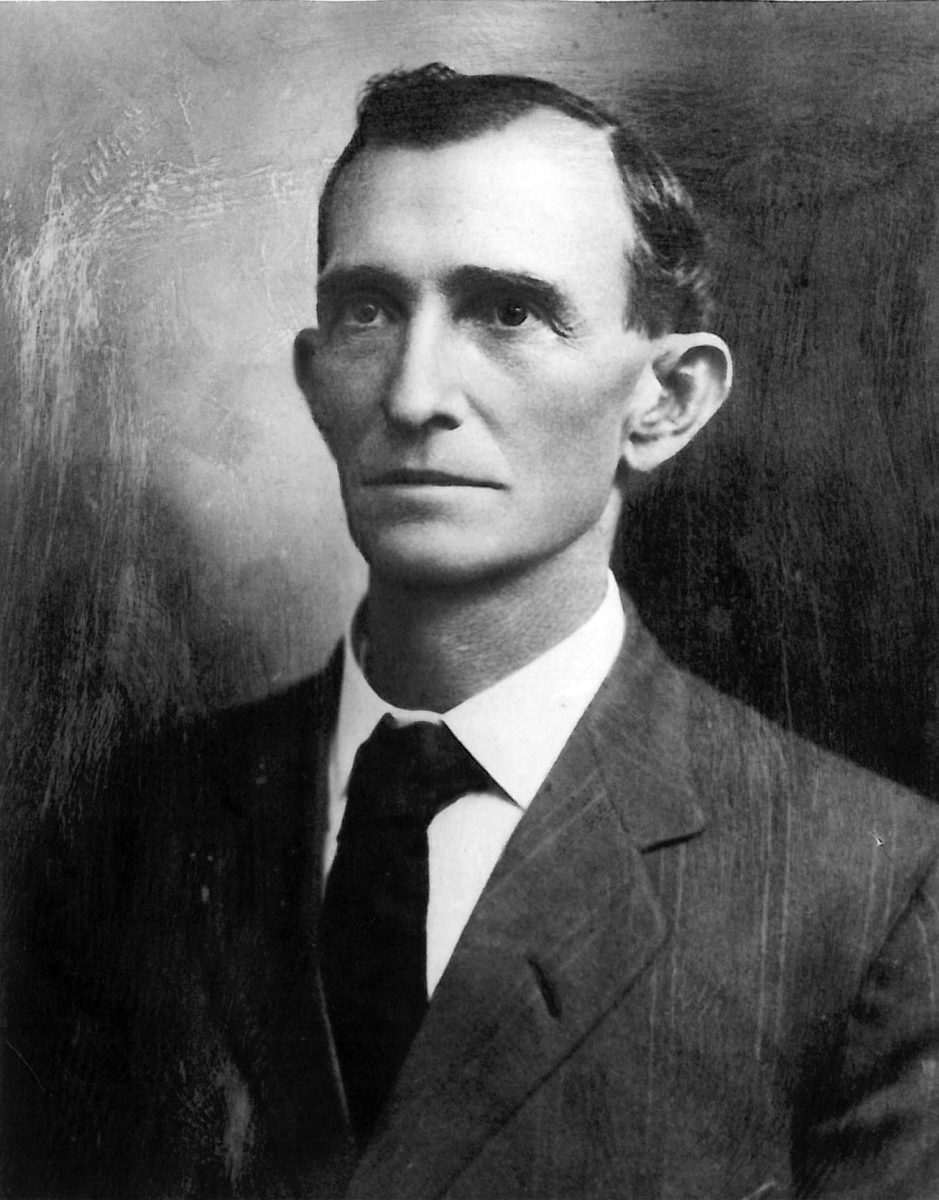
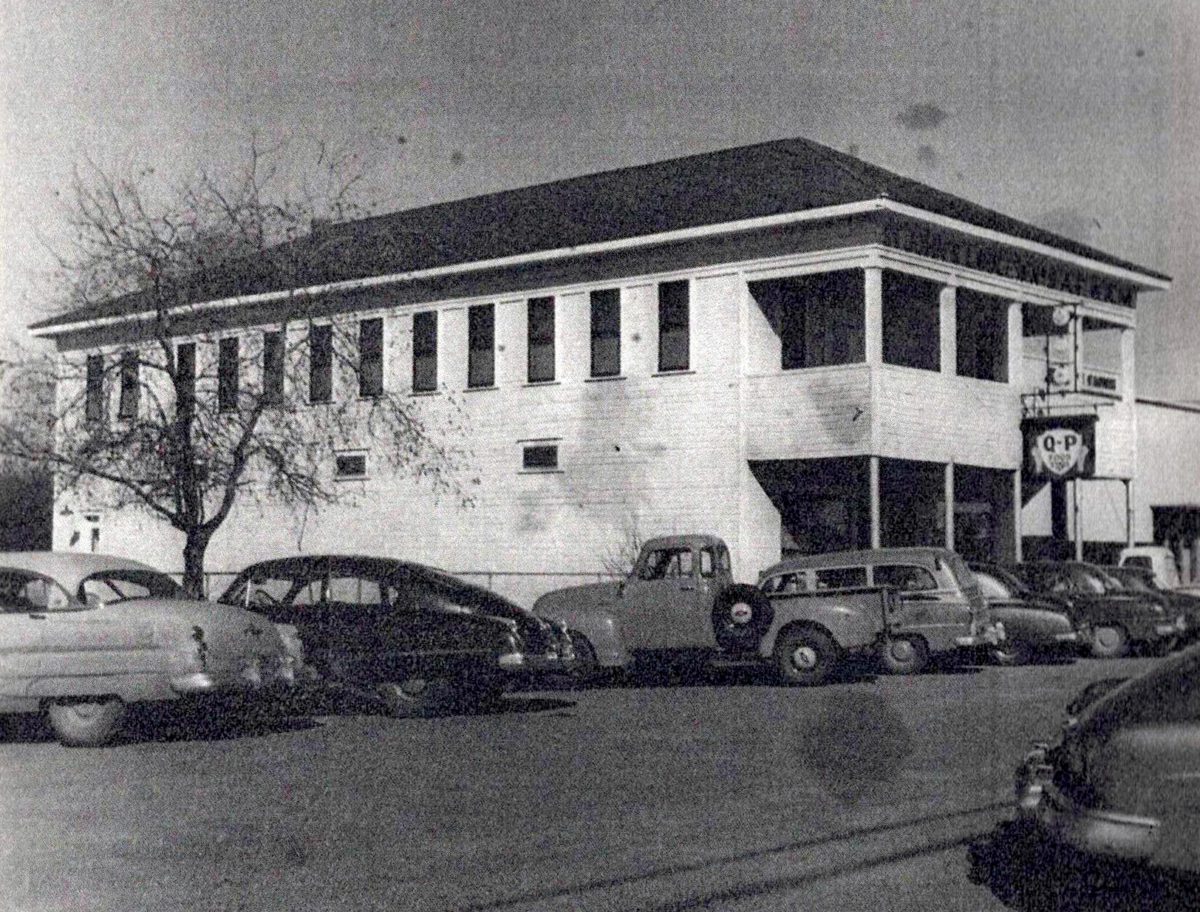
The second Masonic Lodge, located on Broad Street. The downstairs was the Q+P Food Store. To the right of the lodge is the First Capitol State Bank. Photo courtesy of Scott Leopold, from his book “Masons in the Early Days of Texas”
